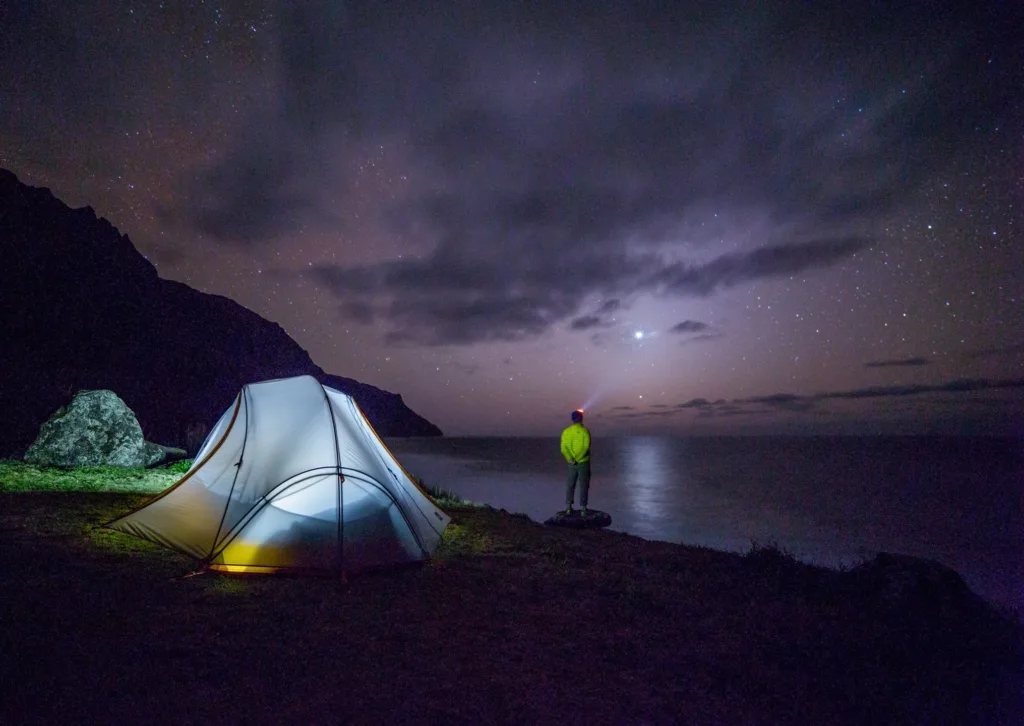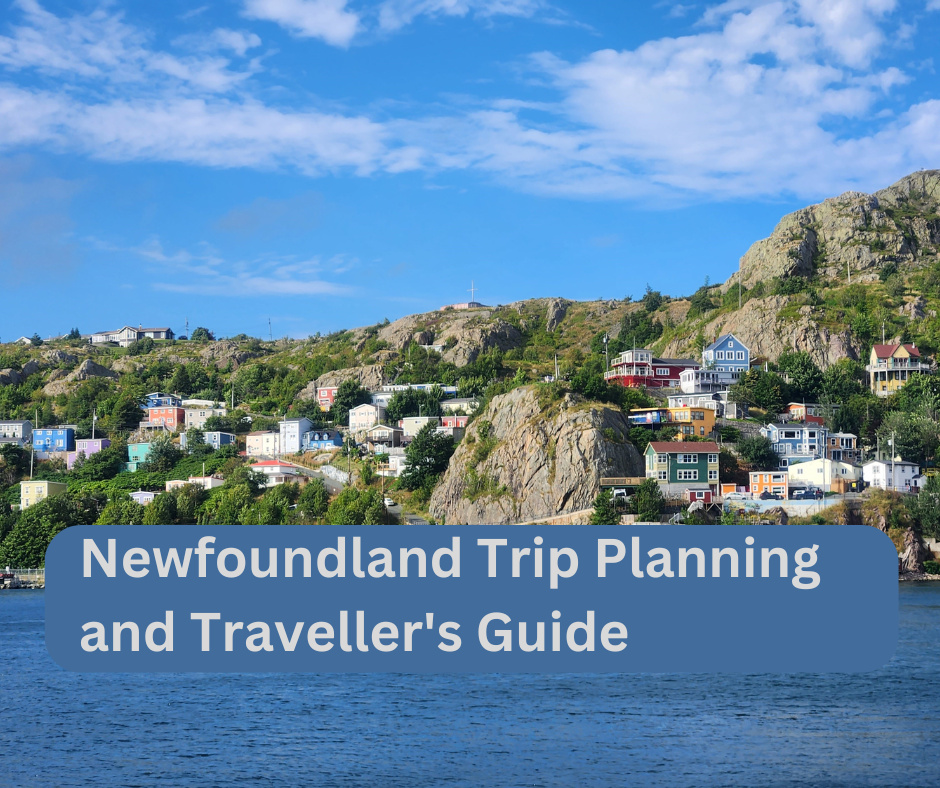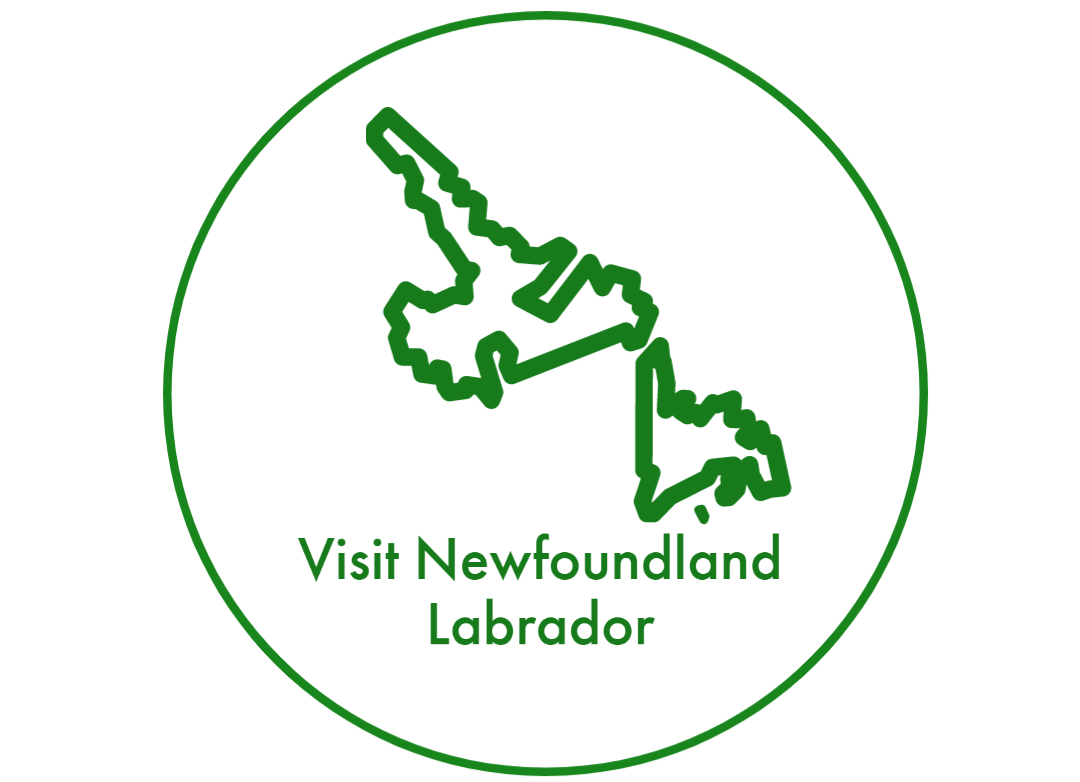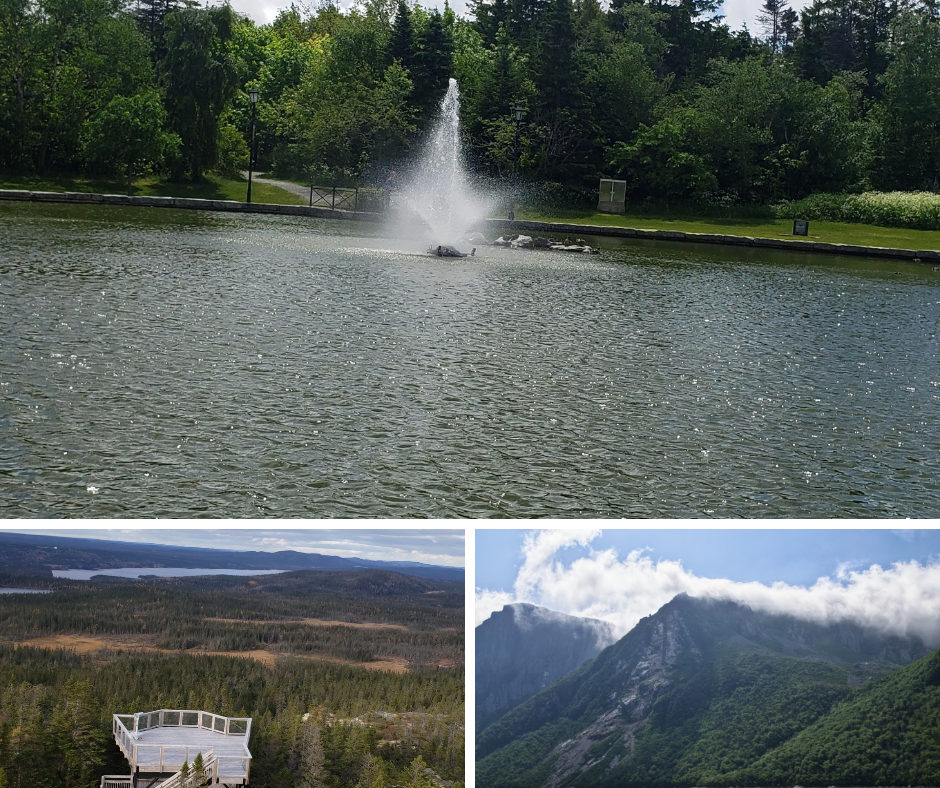The Ultimate Tips For An Happy Family May 24 Weekend Getaway
These are the Ultimate Tips For An Happy Family May 24 Weekend Getaway. As we approach the May 24 weekend, it’s the perfect time for families to plan a getaway to Newfoundland parks and campgrounds. With its scenic beauty and cultural diversity, Newfoundland has much to offer to keep your family happy and engaged.
Choose the Right Accommodation: A happy family getaway requires comfortable and safe accommodations. Consider staying in a cottage, cabin, or hotel with plenty of family amenities, such as pools and outdoor activities.
Explore the Natural Beauty: Newfoundland is known for its breathtaking landscapes. Plan to visit popular spots such as Gros Morne National Park, Signal Hill, and Cape Spear. Then, take a scenic drive along the coast and admire the rugged coastline and rolling hills.
Get Active: Engage in outdoor activities such as hiking, fishing, kayaking, or whale watching. These activities not only keep you and your family active, but they also help you experience the natural beauty of Newfoundland.
Embrace the Local Culture: Newfoundland has a unique culture and history. Visit the local museums, art galleries, restaurants, breweries, and historic sites to learn about the local heritage and traditions.
Indulge in Local Cuisine: Newfoundland and Labrador’s diverse cuisine will surely please everyone in your family. Try the local seafood, fish and chips, or the famous Newfoundland screech (have a drink, it’s a long weekend).
Plan for Rainy Days: Newfoundland weather can be unpredictable, so be prepared for rainy days. Bring indoor activities such as board games, books, or movies to entertain everyone.
Take Time to Relax: A family getaway is more than just activities. It’s also about relaxing and enjoying each other’s company. So plan for downtime to relax and recharge.
A happy family May 24 weekend getaway in Newfoundland requires planning, flexibility, and a willingness to try new things. Newfoundland is a stunning destination with numerous parks perfect for nature lovers. It does not matter if you are a local or a tourist. These are some tips for having the best experience when visiting a park in Newfoundland.
Here are the top parks to visit or camp in Newfoundland and Labrador. You can view the Google map pin for all 31 parks across the island here.
- Barachois Pond Provincial Park
- Blow Me Down Provincial Park
- Butter Pot Provincial Park
- Dildo Run Provincial Park
- Frenchman’s Cove Provincial Park
- J.T. Cheeseman Provincial Park
- Lockston Path Provincial Park
- Notre Dame Provincial Park
- Pinware River Provincial Park
- Pistolet Bay Provincial Park
- Sandbanks Provincial Park
- Sir Richard Squires Memorial Provincial Park
- The Arches Provincial Park
- Cataracts Provincial Park
- Chance Cove Provincial Park
- Codroy Valley Provincial Park
- Deadman’s Bay Provincial Park Beach
- Dungeon Provincial Park
- Gooseberry Cove Provincial Park
- Duley Lake Provincial Park
- Fitzgerald’s Pond Park
- Flatwater Pond Park
- Grand Codroy Provincial Park
- Jack’s Pond Park
- Jipujijkuei Kuespem Provincial Park
- Jonathan’s Pond Campground
- Windmill Bight Municipal Park
- Bellevue Beach Campground
- Gros Morne National Park Of Canada
- Terra Nova National Park
- Torngat Mountains National Park
Here are some of the top park travel tips for Newfoundland.
Getting Around Newfoundland and Labrador
Booking a Rental car is the easiest way to get around Newfoundland and Labrador. The province is vast and remote, and public transportation can be limited. A car rental lets you explore at your own pace and visit off-the-beaten-path destinations.
Park Travel Tips
Dress appropriately for the weather. Newfoundland can be unpredictable, so be prepared for all kinds of weather, including rain, wind, and sun.
Bring a map! Even if you have a GPS. It’s good to have a backup if you lose signal or run out of battery.
Don’t forget your camera. Newfoundland’s parks are home to some of the world’s most stunning landscapes and wildlife. You will want to capture these moments.
Keep your distance from wildlife. While getting close to wildlife for a photo opportunity is tempting, it’s important to remember that these animals are wild and unpredictable. Therefore, it’s best to observe them from a safe distance.
Pack a picnic lunch. Many of Newfoundland’s parks have picnic areas, so bring some sandwiches and snacks to enjoy while taking in the scenery.
Respect the environment. Leave no trace when you leave a park. This means picking up all your garbage and leaving the area as you found it.
Stay on designated trails. Not only is it safer to stay on marked trails, but it also helps to protect the environment and wildlife.
Bring insect repellent. Blackflies can be a nuisance, especially in the summer months.
Check park regulations. Some parks have specific rules and regulations, so make sure to read up on them before you go.
Newfoundland’s parks are meant to be enjoyed at a leisurely pace, so don’t rush through them. Instead, take the time to appreciate the beauty and tranquillity of nature.
Things to Do
Newfoundland’s parks offer a variety of activities for visitors to enjoy. From hiking to camping to kayaking, there is something for everyone. These are some of the top activities to try when visiting a park in Newfoundland:
Hiking: Newfoundland’s parks have some of the best hiking trails in the world, ranging from easy strolls to challenging treks. Some popular hiking destinations include Gros Morne National Park, Terra Nova National Park, La Manche Provincial Park, Butter Pot Provincial Park and Barachois Pond Provincial Park.
Camping: Spending a night under the stars is a fun way to experience the beauty of Newfoundland’s parks. Many parks have campgrounds with amenities such as fire pits, picnic tables, and washroom facilities.

Kayaking: Newfoundland coastline is dotted with fjords, bays, and coves, making it an ideal location for kayaking. You can rent kayaks from local outfitters or bring your own. In addition, many of the parks have ponds and lakes you can kayak on.
Wildlife viewing: Newfoundland is home to a variety of wildlife, including birds, moose, caribou, fox, black bears, and whales. Book a guided tour or explore on your own to spot these magnificent creatures in their natural habitat.
Fishing: Newfoundland’s rivers and lakes are full of fish, including Atlantic salmon and brook trout. Buy a fishing license and try your luck at catching your own dinner.
There are numerous activities to enjoy when visiting a park in Newfoundland. Hiking, camping, kayaking, wildlife viewing, and fishing are just a few options available. Make sure to plan ahead and prepare accordingly for your chosen activity.
Enjoy More Newfoundland and Labrador Travel Guides
- Best Towns In Newfoundland For A Relaxing Weekend Getaway
- 8 Gorgeous Beaches in Newfoundland That You Need to Visit
- The best things to do in Twillingate
- Colourful Northern Lights In Newfoundland And Labrador Sky
- The Best Trip Ideas for Newfoundland
- The best 11 Newfoundland destinations for family to travel
- The best restaurants for breakfast in downtown St. John’s
- 19 Quirky and Unusual Things to Do in St John’s
Best Time of Year to Visit
When planning a trip to Newfoundland’s parks, it’s important to consider the best time of year to visit. The weather can vary greatly depending on the season, so here’s a breakdown of what to expect:
Spring (March to May): Spring can be a great time to visit if you don’t mind cooler temperatures. During the spring months, the snow starts to melt, and the landscape comes alive with new growth. It’s also a good time for birdwatching, as many species return to Newfoundland to breed. Finally, spring is the best time to see icebergs in Newfoundland and Labrador.
Summer (June to August): Summer is the most popular time to visit Newfoundland’s parks and for good reason. The weather in the summer is warm, and the days are long. However, be prepared for crowds and higher prices. It’s best to book accommodations and activities well in advance. Summer is perfect for whale watching and all outdoor activities.
Fall (September to November): Fall is a beautiful time of year to visit, with the changing leaves creating a stunning display of colours. It’s also a great time for hiking, as the cooler temperatures make for comfortable hiking conditions.
Winter (December to February): Winter in Newfoundland’s parks is a magical experience, with snow-covered landscapes and frozen lakes. It’s a great time for winter sports like snowshoeing and cross-country skiing. However, be prepared to encounter cold temperatures and shorter days.
When visiting Newfoundland’s parks, it’s also important to be aware of the cultural significance of the land. Many areas have deep historical and cultural roots, and respecting and honing them is important. Spend extra time learning about the indigenous communities and their traditions, and be mindful of any cultural protocols that may be in place.
Parks Safety Tips
Safety is another important aspect to consider when planning a trip to Newfoundland parks. While these parks offer unique opportunities for adventure, they can also be very dangerous if proper precautions aren’t taken.
Safety tips to keep in mind:
Stay on designated trails: While it may be tempting to explore off-trail, it’s important to stay on designated paths to avoid getting lost or injuring yourself.
Check the weather forecast: Newfoundland weather can be unpredictable. So check the forecast before heading out. Be prepared for changing conditions, and bring appropriate clothing and gear.
Bring a map and compass: Even if you’re staying on designated trails, it’s important to have a map and compass in case you get lost.
Pack enough water and food: It’s important to stay hydrated and fueled while exploring the parks. So pack enough water and food for your adventure.

Be aware of wildlife: While seeing wildlife can be an amazing experience, it’s important to keep a safe distance and not approach them. Stay alert and make noise while hiking to avoid surprising any animals.
Please respect the environment: Newfoundland’s parks are fragile ecosystems, and it’s important to respect them by not littering or disturbing the environment.
It’s important to plan your trip in advance and make any necessary reservations. Many popular activities and accommodations book up quickly, so planning ahead is important to ensure you are satisfied with the place you choose to stay. Also, be prepared for the unexpected, such as closures or limited access due to weather or other factors. Visiting Newfoundland’s parks can be an amazing experience, but taking safety and preparation seriously is important.
Travelling to Newfoundland and Labrador. Travelers also ask.

Can you see icebergs in Newfoundland now?
Icebergs are typically seen off the coast of Newfoundland from late spring to early summer. The best months for iceberg viewing are usually May and June. If it’s within this timeframe, you can likely see icebergs, especially in areas like Twillingate and St. Anthony.
When to see icebergs in Twillingate?
The prime time to see icebergs in Twillingate is from late May to early June. This period offers the highest likelihood of witnessing these massive ice formations as they drift southward along the coast.
Where is the best place to see icebergs?
The best places to see icebergs in Newfoundland include Twillingate, St. Anthony, Bonavista, and Fogo Island. Twillingate is often called the “Iceberg Capital of the World” due to its high iceberg count and accessibility.
What is the best month to see icebergs in Newfoundland?
The best month to see icebergs in Newfoundland is May. During this month, the icebergs are plentiful, and the weather is often more favourable for boat tours and coastal viewing.
How long do icebergs last in Newfoundland?
Icebergs can last from a few weeks to several months in Newfoundland waters. Their longevity depends on their size, the water temperature, and the weather conditions. Typically, icebergs seen off Newfoundland begin their journey from Greenland and take about 1-2 years to reach the island.
Where is Newfoundland Iceberg Alley?
Iceberg Alley refers to the stretch of ocean off the coast of Newfoundland and Labrador, where icebergs are commonly seen. It extends from the coast of Labrador down through Newfoundland’s eastern shore, including areas like Twillingate, St. Anthony, and Bonavista.
Are there icebergs in Newfoundland in August?
By August, the number of icebergs in Newfoundland significantly decreases. While it’s possible to see the occasional iceberg, they are much rarer than the peak months of May and June.
What month is the warmest in Newfoundland?
July is typically the warmest month in Newfoundland, with a temperatures ranging from 15°C to 20°C. This makes it a popular time for visitors seeking to explore the island’s natural beauty.
Where to see whales in Newfoundland?
Whale watching is popular in Newfoundland from June to September. The best locations include St. John’s, Trinity, Bonavista, and Witless Bay Ecological Reserve, renowned for its abundant marine life, including humpback whales.
Can you see the Northern Lights from Newfoundland?
You can see the Northern Lights from Newfoundland, particularly in the more northern and remote parts of the island. The best times are during the fall and winter when the nights are the longest and the skies are the darkest.
How close to Newfoundland did the Titanic sink?
The Titanic sank about 370 miles south-southeast off the coast of Newfoundland. The nearest land to the wreck site is the southeastern tip of Newfoundland.
How close is the Titanic to Newfoundland?
The Titanic’s wreck is located approximately 370 miles off the coast of Newfoundland. This proximity made Newfoundland a critical point in the communication and rescue efforts following the disaster.
Where did the Titanic sink off Newfoundland?
The Titanic sank in the Atlantic Ocean, approximately 370 miles south-southeast of Newfoundland coast.
Are there polar bears in Newfoundland?
Polar bears are not native to Newfoundland itself, but they occasionally appear on the northern coast of Labrador, particularly when sea ice drifts south from the Arctic.
What is the iceberg capital of Canada?
Twillingate, a small coastal town in Newfoundland, is known as the “Iceberg Capital of the World” due to its frequent and spectacular iceberg sightings during the peak season.
How fast do icebergs move?
Icebergs generally drift at about 0.7 kilometres per hour (0.4 miles per hour). However, their speed can vary depending on ocean currents, winds, and the iceberg’s size.
Why are icebergs sometimes black?
Icebergs appear black when they contain a high amount of sediment and debris. This can occur when icebergs calve off glaciers that scrape the land, picking up rocks and soil, which then get frozen into the ice.
Does the Atlantic Ocean in Newfoundland freeze?
The Atlantic Ocean around Newfoundland does not freeze over due to its relatively warmer temperatures than Arctic waters. However, sea ice and icebergs from the Arctic can drift into Newfoundland waters, especially during the spring.
Are there puffins in Twillingate?
While puffins are not commonly found in Twillingate, they are prevalent in other parts of Newfoundland, such as the Witless Bay Ecological Reserve. Twillingate is more famous for its iceberg and whale sightings.
What is the best time to see whales in NL Newfoundland?
The best time to see whales in Newfoundland is from June to September. Humpback whales, minke whales, and other species migrate through Newfoundland coastal waters during this period.
Is the tip of the iceberg visible?
Yes, the tip of the iceberg is visible above the water, but it represents only about 10% of its total mass. The remaining 90% is submerged underwater, making icebergs particularly dangerous for ships.
Can you see icebergs in Newfoundland in July?
Yes, you can still see icebergs in July in Newfoundland, although they are less common than in May and June. By July, many icebergs have drifted further south or melted.
Where is the best place to see icebergs?
Twillingate, St. Anthony, Bonavista, and Fogo Island are the best places to see icebergs in Newfoundland. These locations offer optimal viewing points and tour opportunities.
How often can you see northern lights in Newfoundland?
The Northern Lights can be seen in Newfoundland several times a year, especially in the fall and winter months. The frequency depends on solar activity and the clarity of the night skies.
Why is it called Iceberg Alley?
The stretch of water known as Iceberg Alley gets its name from the numerous icebergs that travel through this area each year. The icebergs originate from Greenland and drift down the Labrador Current past Newfoundland and Labrador.
When should I visit Iceberg Alley?
The best time to visit Iceberg Alley is from late May to early June. During this period, the highest concentration of icebergs can be seen, offering the most spectacular views.
Can you swim in Newfoundland in August?
Yes, you can swim in Newfoundland in August, especially in the warmer, sheltered areas like lakes and coves. However, the ocean waters remain pretty cold, typically around 12-15°C, so swimming in the sea can be chilly.
How hot is Newfoundland in July?
Newfoundland experiences its warmest weather in July, with a temperatures ranging from 15°C to 20°C. Some days can be warmer, especially inland and away from the coastal breezes.
These are the best travel planning resources you should use.
Looking to book your trip to Newfoundland and Labrador? Use these resources that are tried and tested by other travellers like you who vacation in Newfoundland and Labrador. Bookmark these links. Save them for future reference.
Booking Flights, Hotels or B&B: Start planning your next vacation trip by finding the best flight, hotel or b&b deals. Book Here
Finding things to do in Newfoundland and Labrador on TripAdvisor and Viator is not hard. Enjoy boat tours, whale watching, icebergs watching, kayaking and other activities.
You can also find low prices on hotels, B&B and cabins with these two providers. If you are located in Canada, the USA, the UK or Europe, use Booking.com, and if you are in Canada, the USA or anywhere else, use TripAdvisor.
Car Rental: Here is what we recommend:
When you book with Rentalcars.com, you can compare prices and find the best vehicle for your trip. Economybookings.com Display all their vehicle on the website with a detailed description. They display high-quality photos and a user rating as well. Qeeq.com serves road trip travellers like you from different countries by working with car rental companies worldwide.
Get compensated if your flight is delayed or cancel
AirHelp and Compensateair will help you with flight delays, cancellations, or denied boarding. All you need to do is to submit your flight details, and they will handle the claim process on your behalf. They will handle all the paperwork, airline negotiations, and legal proceedings.
Do you need more help planning your trip?
Check out our Resources Page, where we highlight all the resources and companies you can use to assist with your planning.



